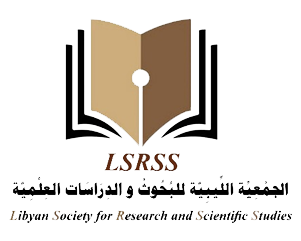 Open Access Journal
Open Access Journal
International Science and Technology Journal

ISSN: 2519-9854 (Online)
ISSN: 2519-9846 (Print)
A peer-reviewed and open access journal concerned with publishing researches and studies in the field of applied sciences and engineering
Published by

Supervised by

Investigation of the Effect of Nozzle diameter on AZ31 Powder Production by Gas Atomization Method
| Researcher(s): | - Kamal Mohamed Akra
- Mustafa Boz
|
|---|
| Institution: | Karabuk University |
|---|
| Field: | التقنيات الميكانيكية و المواد الهندسية |
|---|
| Published in: | 16th volume - January 2019 |
|---|
الملخص
في هذه الدراسة، تم دراسة تأثير قطر الفوهة بشكل تجريبي على شكل وحجم مسحوق سبيكة ماغنيسيوم AZ31 المنتجة بواسطة طريقة الانحلال الغازية. للقيام بذلك، يتم إجراء الاختبارات عند درجة حرارة ثابتة تبلغ 790 درجة مئوية، مع ضغط غاز 35 بارًا وبتطبيق قطر الفوهة بأربع قيم مختلقة 2،3،4،5 ملم. يتم تفتيت المصهور باستخدام غاز الأرغون ، في حين يتم استخدام المسح المجهري الإلكتروني (SEM) لتحديد شكل مسحوق AZ31 المنتج، يتم تطبيق تحليلات XRD و XRF لتحديد المراحل المتولدة في الهياكل الداخلية للمساحيق المنتجة وكذلك النسب المئوية لكل مرحلة. أيضا ، يتم استخدام جهاز قياس بمساعدة الليزر لتحليل حجم المسحوق. المظهر العام لمساحيق السبيكة AZ31 المنتجة على شكل رباط، قضيب، قطرة، تقشر وكروية، ومعظم المساحيق حصلت على تقشر وأشكال كروية اعتمادا على الزيادة في ضغط الغاز. يتم تحديد أن أفضل مسحوق يتم الحصول عليه عند درجة حرارة 790 درجة مئوية وضغط غاز 35 بار بقطر 2 مم، وأن المسحوق يظهر على شكل قطرات واشكال كروية.
Abstract
In this study, the effect of nozzle diameter is investigated experimentally on the shape and size of the AZ31 alloy powder produced via the gas atomization method. To do this, tests are carried out at a constant temperature of 790 °C, with a gas pressure of 35 bar and by applying nozzle diameter at four different values: 2,3,4,5 mm. The atomization of the melt is done with argon gas, while scanning electron microscopy (SEM) is used to determine the shape of the AZ31 powder produced, XRD and XRF analyses are applied to determine the phases generated in the internal structures of the powders produced as well as the percentages of each phase. Also, a laser-assisted measurement device is used for powder size analysis. The general appearance of the AZ31 alloy powders produced is in the form of ligament, rod, droplet, flake and spherical, and most of the powders got into flake and spherical forms depending on the increase in gas pressure. It is determined that the finest powder is obtained at a temperature of 790 °C and a gas pressure of 35 bar at a diameter of 2 mm, and that the overall powder get in form of both droplet and spherical



